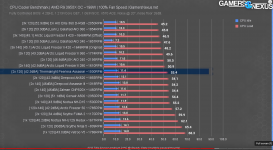- Joined
- May 28, 2019
- Messages
- 10,278
- Reaction score
- 7,204
Phanteks has expanded its Glacier One D30 AIO lineup with the launch of the 420D30 in black or white color options for Intel or AMD processors. Phanteks introduced the Glacier One line with 240mm and 360mm models, featuring its low noise D30 fans with DRGB lighting that can be daisy-chained or connected via a single cable. The AIO copper plate comes pre-coated with thermal paste and Phanteks has also included additional compound. The 420D30 is compatible with most AMD and Intel processors including 14th gen CPUs. Three 140mm D30 PWM fans cool the 420mm aluminum radiator that is 27mm thick.
See full article...
See full article...

